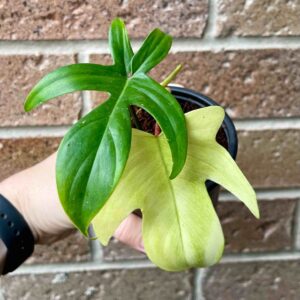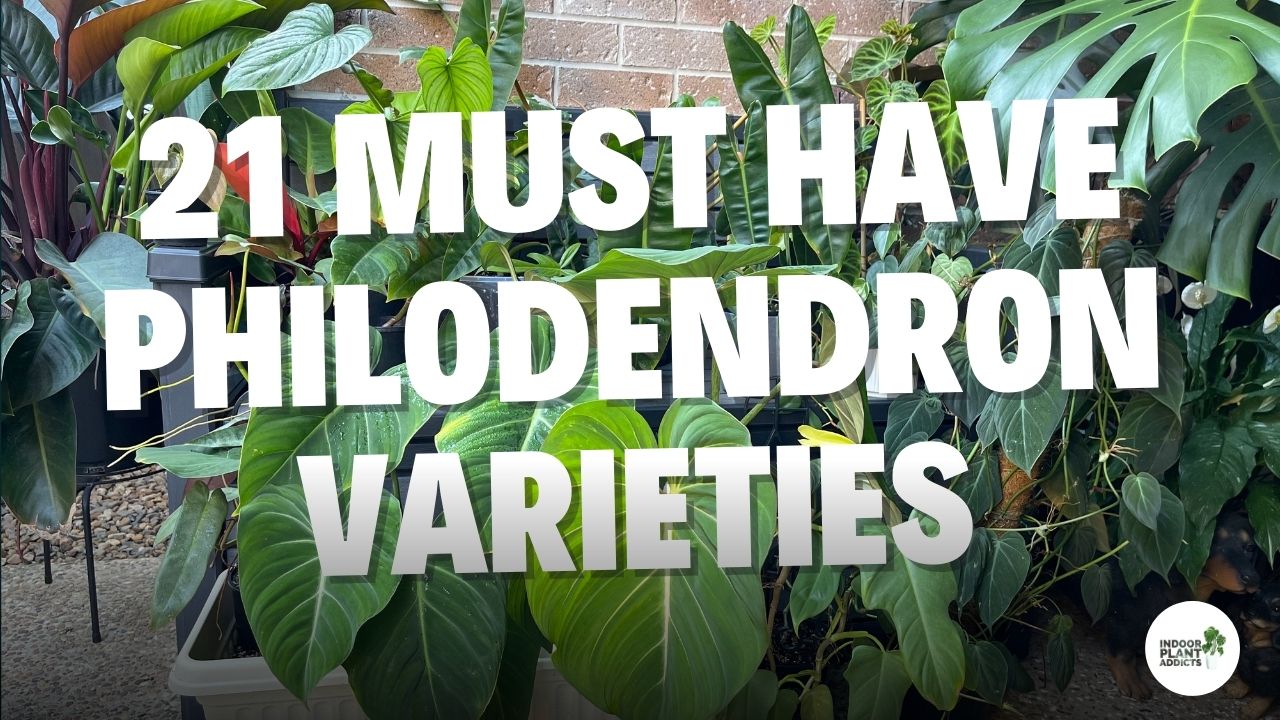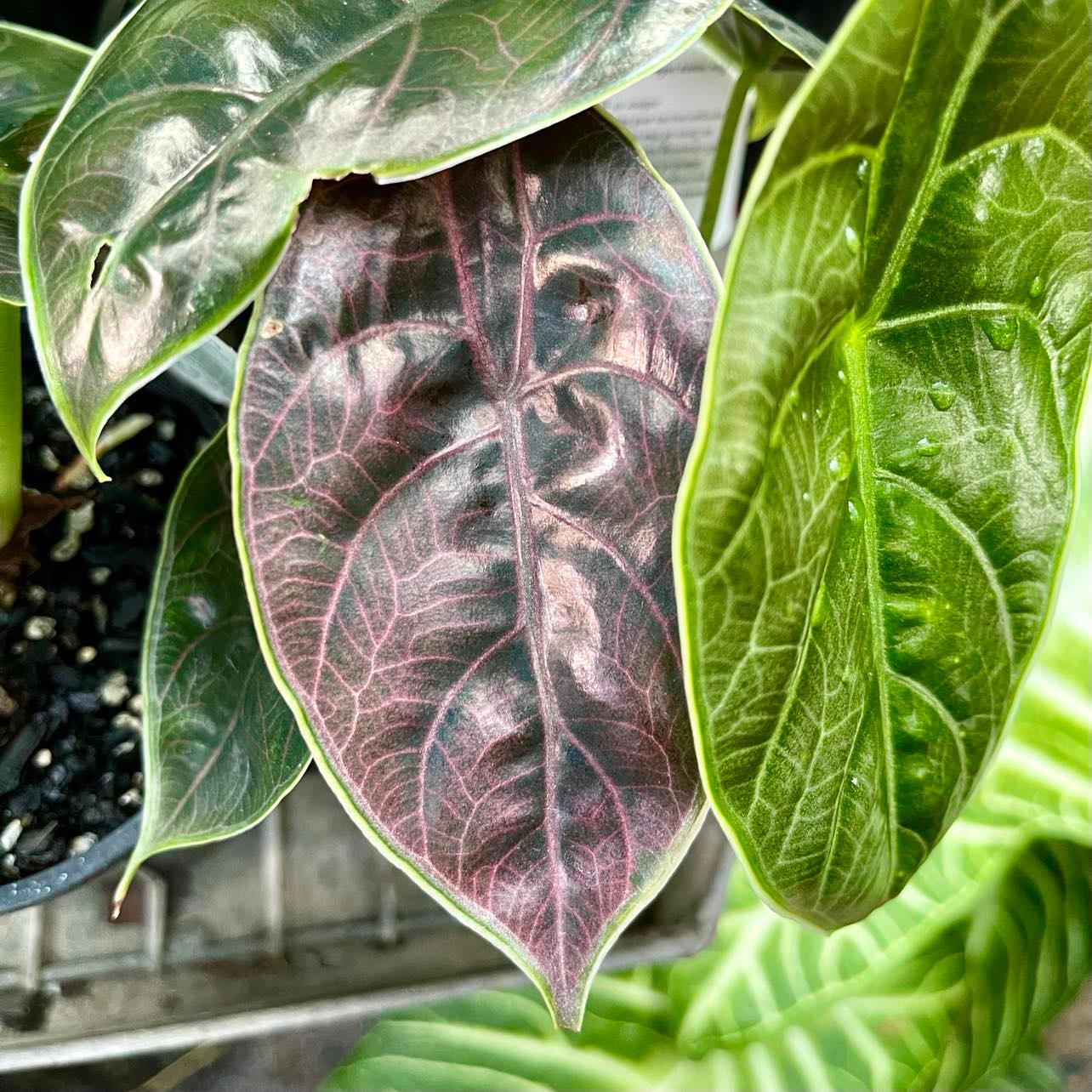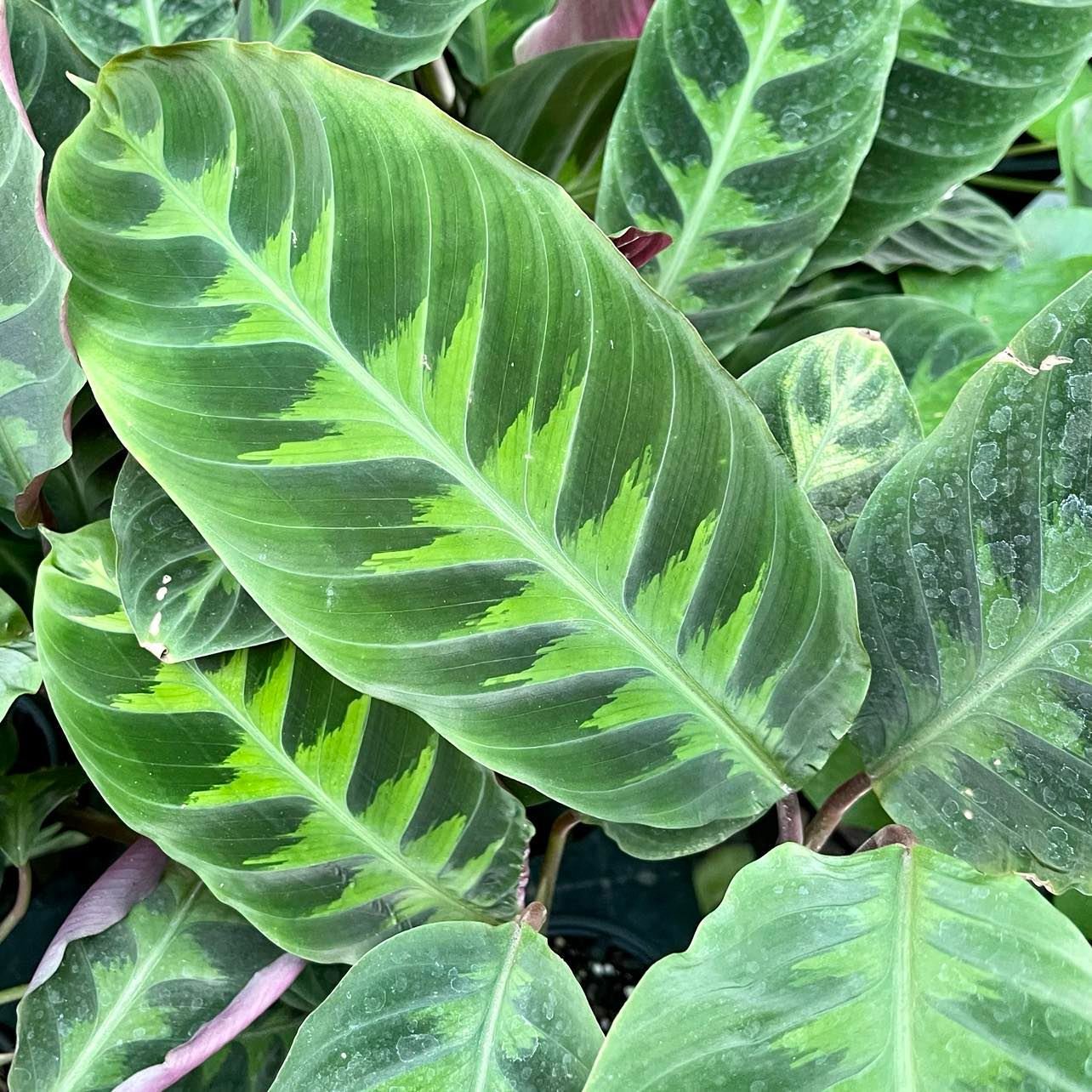Philodendron Pedatum a.k.a Philodendron Florida Ghost, Philodendron Ghost
The Philodendron Florida Ghost is a unique plant to add to your collection. This is a rarer plant that has unusual shaped leaves. The leaves of a Philodendron Ghost start off as a white/cream colour before eventually turning green as the plant matures. Nearly every leaf is a different shape and contains various lobes.
Philodendron Florida Ghost is part of the Araceae family and native to South America. This plant is thought to be a hybrid of Philodendron Squamiferum and Philodendron Pedatum. The Philodendron Ghost is a slow growing vining plant that will need to be supported by a pole or trellis. Unique and easy to grow, this plant is a must have in your plant collection.

Philodendron Florida Ghost Quick Overview
| Full Size | Up to 5 feet |
| Light | Bright indirect light |
| Temperature | 65ºF-95ºF (18ºC-35C) |
| Humidity | Above 60% |
| Cost | $$ |
| Care Level | Easy |
| Toxicity | Toxic |
Size
The mature size of a Philodendron Florida Ghost can be up to 5 feet in height. A mature leaf can reach up to 10 inches in length. This philodendron is a natural climber which means you’ll need something to help support the plant. Providing a moss pole will help keep the plant stable and promote larger growth. Due to the white leaves and lack of chlorophyll, this plant is quite a slow grower.
Light Requirements
Philodendron Florida Ghost grow best in bright indirect light. It’s best to avoid direct sunlight as this can burn the foliage. A north facing window is a good spot to keep your plant as it will receive enough light to photosynthesis but won’t get burnt by the sun. Philodendron Ghost can tolerate lower lighting conditions however, bright indirect light is best. A sign that your Philodendron Florida Ghost is not receiving enough light is the plant becoming leggy and leaves becoming green.
If your plant is housed in a spot where it receives direct sunlight, adding a blind or curtain to your window will help to defuse the harsh sunlight to avoid burning the plants foliage. Alternatively, if you can’t seem to find that perfect spot in your home, you can always use grow lights. Just like direct sunlight, if your plant is sitting too close to the grow lights, they will burn the foliage. Keeping a safe distance of at least 60cm between your plant and the light will avoid any trouble.
Temperature
The ideal temperature for growing Philodendron Florida Ghost is between 65ºF-95ºF (18ºC-35C). This plant doesn’t tolerate cold conditions and should be kept away from cold drafts during the cooler months. Damage can occur to the foliage if the plant is exposed to temperatures that drop below 55ºF (12ºC). Prolonged exposure to cold temperatures can lead to plant death. During the cooler months, you should move your plant to a warmer spot in your home.
Humidity
Philodendron Florida Ghost will thrive when kept in an humidity environment that is kept above 50%. This plant can adapt to a range of different humidity levels however, if the environment is too dry, you should try bumping up the humidity or moving your plant. A sign that your Philodendron Florida Ghost may require more humidity is browning leaves.
Providing humidity for your plants will encourage bigger and healthier growth. There are a few thing you can do that can help bump up the humidity in your home. The things you can try are:
- Misting your plants
- Pebble trays
- Grouping plants together
- Humidifier
For more information about increasing humidity in your home click here.
Watering Requirements
Philodendron Florida Ghost will require water at least once a week. Cut back on watering during the cooler months when temperatures, amount of sunlight and growth slows as the plant won’t require as much water. Before watering, you should check the top 2-3 inches of soil with your finger to feel if it’s still moist. If the soil is dry, you should give your plant a drink. A sign that your Philodendron Florida Ghost is thirsty is droopy leaves.
When it comes to watering your Philodendron Ghost, you need to be caution of over-watering. The excess water to the soil can cause it to become waterlogged. This can cause the roots to start rotting as a result of not enough oxygen for the plants roots to breath.
Roots that have rotted can no longer take in any water or nutrients for the plant which causes fungus issues, pest problems and root-rot. A sign that you may have over-watered your Philodendron Florida Ghost is yellowing leaves.
Fertilizing requirements
You should fertilise your Philodendron Florida Ghost monthly during Spring and Summer. You should cut back on fertilising during the cooler months when growth slows.
Fertilising your plants gives them the essential nutrients they need for promoting and maintaining new and healthy growth. Applying fertiliser when the plant isn’t actively using up the nutrients in the soil can cause salt build up and root burn.
The best fertiliser to use for Philodendron Florida Ghost would be a nitrogen rich all purpose fertiliser diluted to half strength. The nitrogen will help in growing and maintaining large and healthy growth. Slow release fertilisers are a great alternative to liquid fertilisers.
If you’re using a slow release fertiliser, you won’t need to give your plant fertiliser as often and the plant can take up the nutrients as it needs them. A sign that your Philodendron Florida Ghost might need more nutrients are pale leaves.
Since this plant is known to be a slow grower, you need to be cautious of over-fertilising. Over-fertilising your Philodendron Florida Ghost can cause salt build up and burn the roots and foliage. If you think you’ve over-fertilised your plant you can either change the soil or rinse the fertiliser out. The water colour will change once the fertiliser has been rinsed out.
For more information on fertilising houseplants click here.
Soil Requirements
Philodendron Florida Ghost like to be kept in a rich, well draining soil. To achieve a good well draining soil, you can use a mix of potting soil, orchid bark, peat moss, charcoal and perlite. These ingredients help to create better drainage and aeration. Air flow is important in potting soil as it allows the plants roots to breath. Not having enough oxygen to the roots can cause them to start rotting.
You can add other things like coco coir, mulch chunks or coconut husk to the soil to help restrain moisture. It’s important to use ingredients that can help hold onto moisture but not make the soil soggy. Adding garden compost or worm castings to the soil will add more richness which this plant will love.
Diseases & Pests
The most common pests that you may encounter on your Philodendron Florida Ghost are spider mites, mealybugs, aphids, scale and fungus gnats. The most common diseases you may encounter are root-rot, Erwinia blight and bacterial leaf spot. For more information on identifying and treating common houseplant pests click here.
The best thing you can do when it comes to pests on houseplants is to try and avoid any pest infestations from starting. There are a few things you can do that will assist in preventing any pest infestations and these things are:
- Checking new plants for pests or isolating new plants for up to a week.
- Check your plants every few days for pests.
- Trim off any dead or dying leaves.
- Wipe down leaves if you notice them getting dusty.
- Keeping your plants healthy. A healthy plant will be able to handle an infestation better than those that aren’t as happy.
- Isolate any plants that have pests.
Following this will assist in keeping pests away as well as catch them early on before any severe infestations are able to start. Keeping plants healthy and in the correct living environments can help to deter any pests from invading your plants.
Toxicity
Philodendron Florida Ghost contain Calcium Oxalate Crystals which is toxic to both humans and pets if ingested. If any part of the plant is ingested, symptoms may include swelling of the oesophagus, GI tract and mouth. If ingested by pets, the symptoms may include vomiting, lack of appetite, drooling and pawing at the mouth. Plant should be kept out of reach of small children and pets.




